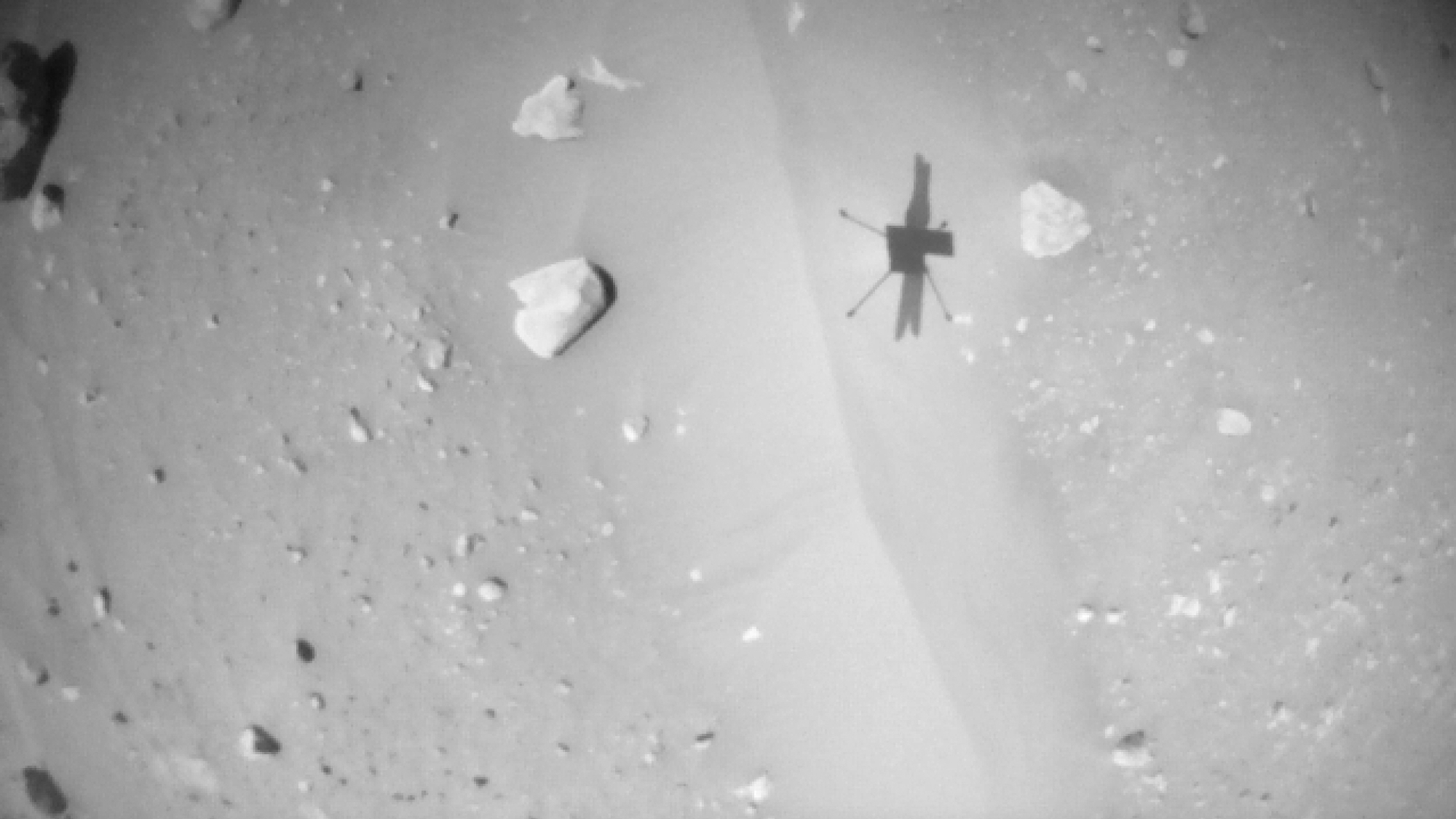How helicopters on Mars could find hidden magnetism in planet's crust
A simple add-on to Ingenuity-like crafts could gather unique data, scientists say.

Last weekend, NASA's Ingenuity helicopter notched over 100 minutes of flying time in thin Martian air, a feat which until only a couple of years ago was considered wildly ambitious.
Originally designed for a simple technology demonstration, the "Marscopter" has far exceeded its initial one-month, five-flight mission, after which its role was extended to scout the Martian landscape and assist NASA's Perseverance life-seeking rover. Riding on Ingenuity's success, scientists are already planning two more mini helicopters. These will serve as backup copters in the space agency's mission to bring tubes of Martian samples to Earth. Teams are also building another craft to visit Saturn's moon Titan.
To make the most of those future space helicopters, a new study proposes an add-on instrument: A magnetometer that could gather unique data about magnetic fields etched onto the crusts of any resident in the solar system being explored.
Related: NASA's Ingenuity helicopter soars past 100 minutes of total Mars flight time
"The era of helicopter-based surveys on Mars has already begun," researchers write in the new study. "We argue that magnetometer-based studies can make use of aerial technology to answer some of the key questions regarding early Mars evolution."
Helicopters flying on Mars would be most useful by filling in gaps in hyperlocal data observations collected with lander-rover duos on the surface as well as in global data gathered by orbiters circling the planet from hundreds of kilometers away, scientists say.
Unlike Earth, Mars does not generate its own magnetic field, and its dynamo — a rotating blob of molten material in the planet's core that once powered a sizable magnetic field — is thought to have shut down about three or four billion years ago, leaving countless pockets of magnetized crust in its wake. However, the depth and strength of these scattered patches on Mars, which can shed light onto the planet's evolution, are not mapped comprehensively.
Breaking space news, the latest updates on rocket launches, skywatching events and more!
So, powered flights at low-altitudes on Mars, perhaps only tens of kilometers high, could detect some of those "unexplored signals" with aerial measurements of canyons, steep slopes, craters and dunes otherwise considered too dangerous for rovers but too tiny for spacecraft orbiting the planet to capture, according to the new study.
"A helicopter is the ideal platform to overcome such limitations," scientists say. Studying these small-scale magnetic fields "can provide information that simply cannot be gleaned from orbit."
There is precedent on Earth that such an effort could be useful. Aircraft survey data had previously revealed a pattern of magnetic anomalies alongside tectonic plate boundaries, which ultimately became key evidence for the planet's now well-established magnetic field reversals. The same pattern was not found in data from satellites orbiting Earth, according to the new study.
This research is described in a paper published Aug. 29 in The Planetary Science Journal.

Sharmila Kuthunur is an independent space journalist based in Bengaluru, India. Her work has also appeared in Scientific American, Science, Astronomy and Live Science, among other publications. She holds a master's degree in journalism from Northeastern University in Boston.
